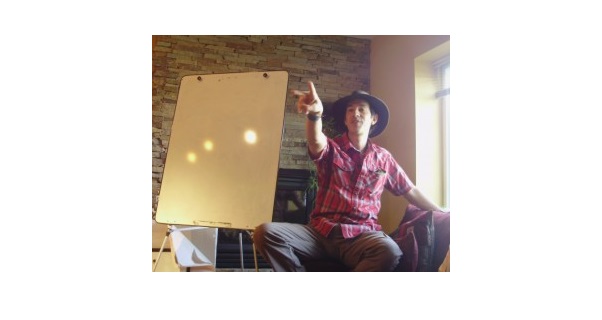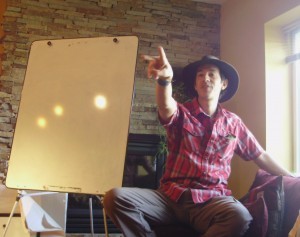Westcliffe, Colorado can be deceiving. The sweeping landscape, rugged Sangre de Cristos and big open sky seem devoid of complexity. The endless grassland’s only colorful residents are the wildflowers – unobtrusive plants easily crushed underfoot by the careless walker.
But if one stops and looks closely enough one sees a vast network of life, where a flower is a not only an individual organism but part of the earth and everything attached to it. The wildflower I was looking at had two tiny cacti growing in its shade. The plant itself had grown up from the base of a large rock which protected it from wind and sun. Each one needed another to survive and they were all part of something else, something big. “Don’t you see,” it seemed to say, “that I’m more than a flower, that I’m one of the many colors celebrating this season in the life of the planet?”
I suddenly felt a little embarrassed, like I hadn’t been paying attention in class and didn’t understand the simplest of terms.
I was in Westcliffe with the July Permaculture Design Certification class, learning how to observe (the first Holmgren principle). We had practiced using our peripheral vision to look at the world, we had sat alone for 15 minutes making notes about what we heard and saw. Now I was touching and sensing this beautiful orange-blossomed flower, hoping to notice something other than how squatting hurt my feet.
This was serious! Soon I would join a team of my classmates and, over the next four months, develop a design for a designated site. At the end of those four months we would present our design to the rest of the class. I suddenly felt completely unworthy and unprepared for such a task. How could I possibly know what was best for the earth, even a very small part of it?
What I thought was a class about growing an abundance of food in a sustainable way had morphed into a calling. I was now responsible for integrating human needs into that web of life already moving gracefully and efficiently before my eyes. Carelessness was unthinkable. Too much was at stake.
Related: Photo gallery from our Westcliffe weekend
I looked down at the flower before me and felt sad that it and all the other wildflowers would soon die, taking the color with them. But the brilliant orange blooms were bursting with joy. They would change, yes. But they were part of that bigger something and that, would continue on forever.
So here I am, embarking on the second half of this PDC, sobered by this new responsibility, filled with a new respect and walking ever so carefully upon the face of the earth.





